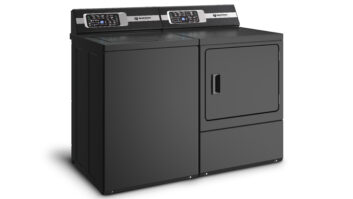New York – The
Open Mobile Video
Coalition (OMVC)
revealed Tuesday several new tools that will help Mobile
DTV consumer electronics manufacturers reduce the need for expensive field
testing and help TV station engineers design more robust Mobile DTV systems.
At a conference here this week, the OMVC unveiled a new
Predictive model for reception of UHF (channels 14 to 51) Mobile DTV signals,
and has coordinated over the past several months the “capture” (or recording)
of live over-the-air Mobile DTV RF signals in the Washington D.C. market.
The RF Capture Catalog is a collection of profiles that
broadcasters and product developers can play back in the laboratory for more
thorough analysis and evaluation of the Mobile DTV RF environment.
Different captures of RF television signals will help
broadcasters determine the relative performance between the two services and
their expected coverage.
The RF signal capture program was initiated in March to create a
signal library that will both assist broadcasters in better understanding their
reception environments and help mobile device product developers improve their
products.
Meanwhile, the new Predictive model is intended to predict signal
coverage in automobiles with an antenna mounted on the vehicle, in a handheld
unit operating outdoors, and a handheld unit operating indoors. Broadcaster RF
experts can use this new model to predict future coverage of existing or future
transmit facilities.
“While there are different models used to predict broadcast
signal coverage, we’ve opted for a ‘semi-empirical’ method that uses a blend of
actual field reception data and theory. With information about the local terrain,
antenna height, frequency and polarization as well as details about the
receiver and atmospheric conditions, we can predict signal strength for mobile
broadcasts with this model,” said Anne Schelle, OMVC executive director.
The results are local maps that show where Mobile DTV reception
can be expected to be robust. Subsequent field testing with automobiles showed
the predictive model to accurately correlate to actual conditions.
Future iterations of the Predictive Reception model will consider
the impact of elliptical or circular polarized transmission antennas, the
effects of tall buildings near receivers, and details on predictive reception
for VHF reception.
The OMVC.org has posted on its website a Mobile DTV Propagation study
that reviews the reception characteristics of the mobile video service and
details about the RF Capture program service for device manufacturers, the
coalition said. It is also releasing two other documents for broadcast
engineers: a recommended practices document for deployment of electronic
service guides, and a presentation about the most likely broadcast scenarios
for Mobile DTV services, including 11 use cases for multiple channels at
varying qualities of transmission.
The OMVC said Mobile DTV is already available from 75
broadcasters and is forecasted to hit two-thirds of the viewing public over the
next year, as more stations enhance their broadcast operations.
Mobile DTV broadcasts signals are designed to be transmitted
alongside the HD digital TV broadcasts. But the signal qualities of Mobile DTV
are different than HDTV transmissions because antennas in Mobile DTV receivers
are usually lower to the ground and are always on the move, the OMVC said.
Similar to the process used in the earlier development of fixed
HDTV consumer products, consumer electronics manufacturers can use recorded
streams for lab testing of new Mobile DTV products, and the OMVC has been busy
developing several new services that will help all parts of the ecosystem
deploy the best system for local viewers, Schelle said.













